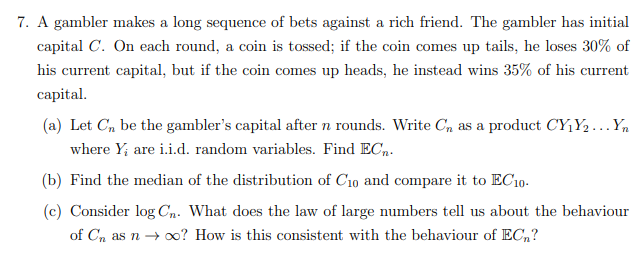I'm looking for math problems of a specific kind. Here are the conditions I hope the problems satisfy:
- A good mathematician who hasn't seen the problem before should take anywhere from 30 minutes to 2 hours to solve it.
- The solution should only involve undergraduate level maths. Difficult Putnam problems are a good benchmark for what kind of maths background should be required to solve the problems. The background required can be much less than this, but it shouldn't be more.
- For whatever reason you think the problem should be more widely known. The reason is completely up to you: the solution might include some insight which you find useful, it might be particularly elegant, it might involve some surprising elements that you wouldn't expect to appear in the context of the problem, et cetera.
- It's fine if the problem is well known, your examples don't have to be original or obscure.
Here are some examples:
-
If a polynomial with rational coefficients defines an injective map , must it also define an injective map ? If yes then prove this is true, if no then find an explicit counterexample.
-
Prove that . In words, prove that homomorphisms of abelian groups from the direct product of countably many copies of to themselves form a group that's isomorphic to the direct sum of countably many copies of .
-
If is a continuous function such that the sequence converges to for every , must it be the case that ? If yes then prove this is true, if no then find an explicit counterexample.
They are all relatively famous but they should give a sense of the flavor of what I'm looking for.

The adjacency condition means that colored regions will form simple closed loops since ends and splits are disallowed. The smallest allowed region is a 2x2 tiles. The basic "textures" will be checkerboards of 2x2 regions and longer alternating stripes or concentric rings.
There are two ways to choose the color of the first corner tile at (1,1) position. The two tiles adjacent to the corner, (2,1) and (1,2) must match the corner. This covers the first two diagonals.
This gives another choice for the color of the (3,1) tile - it can either match the corner or not. Choosing this tile's color constrains other tiles, specifically any tile (x,y) with x+y <= 5 (the next two diagonals). The (4,1) tile must match the (3,1) tile, the (3,2) tile must be different from the corner, the (2,2) tile must be different from the (3,1) tile, etc. All colors will be symmetrical about the x=y diagonal.
Each additional choice constrains another two diagonals until the corner is reached, at which point the entire rest of the grid is constrained (it symmetrically matches the first half). For a 2Nx2N grid, this results in N choices before the entire grid is constrained or 2^n tilings (this extends even to the single degenerate tiling of the 0x0 grid).
For a 1000x1000 grid, there are 2^500 tilings satisfying the condition.